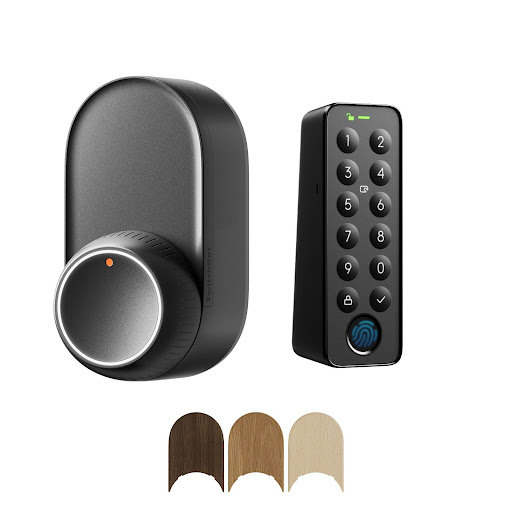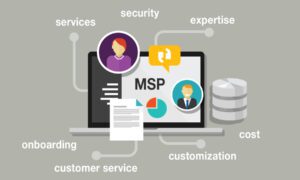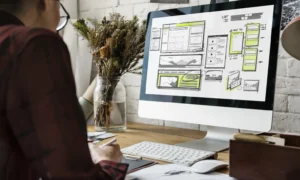Recent FBI statistics show that there are more than 2.5 million home burglaries in the United States every year, and 34% of those break-ins occur through the front door. Only 2/3 of the homeowners have such lock-and-key mechanisms and key reproduction or defeat seems to be feasible. Introducing the door lock with keypad, a simple, yet innovative technology that renders physical keys obsolete. These snazzy tools resolve the annoying truth that so many of us share, coming home to realize you left your key in the most recent pair of pants you wore before crawling into bed, also the anxiety of how safe are those spare keys under your step! But does a digital guardian much better protect you in an age of more advanced security threats? This article takes an in-depth look at how these keyless locks juggle convenience and security, integrate with smart home, and compare with traditional solutions, as well as installation and maintenance considerations. While getting to know their features and drawbacks, you will figure out if keypad locks are a good security Christmas present for your home or not.
Understanding Keypad Door Locks: Types and Core Features
There are two main types of keypad door locks: standalone deadbolts and smart locks. Standalone devices do not need an internet connection to operate, nor do you need an internet connection to be alerted with the outdoor camera. Smart-enabled models link to home networks, using mobile applications and automation systems to deliver expanded command and control options. Ultimately, these locks are essentially a numeric keypad for code input, a heavy duty deadbolt for the lock, and computer hardware inside that controls who can get in. Many lock designs have alternative means of entry from hidden keyholes to external power supply ports for power failure or electronic failure. The keypad itself is generally equipped with backlight numbers so that you can see them at night and a weather-resistant coating to ensure sturdiness. Newer models also provide for multiple user code capability, so owners can set different codes for family members, housekeepers, or temporary guests. Integration varies between manufacturers, but upscale versions such as the SwitchBot also work with leading smart home platforms like SmartThings, Apple HomeKit and Amazon Alexa for unified security routines and for remote control through a central console.
Critical Security Advantages for Homeowners
Eliminating Physical Key Vulnerabilities
Keypad door locks change the way people look at home security, nearly eradicating the threat of unauthorized entry by providing keyless access. Traditional keys are lost and stolen and can be duplicated by the local hardware store without the owner’s knowledge. Keypad entry systems allow you to easily change these codes after a contractor visits, or when you suspect compromise, no longer requiring the pricey process of rekeying traditional locks. For regular service people like cleaners or dog walkers, you can create one-time codes with time limitations, which then expire at the end of their service. This granular access control leaves no unauthorized copies of keys in circulation.
Advanced Threat Prevention Capabilities
Contemporary padlocks have advanced security measures in place that will actively thwart hacking attempts. Tamper detection systems sound an audible alarm and send a mobile alert if someone tries to forcefully remove or tamper with the lock. It also has an automatic locking feature which activates the deadbolt after a few minutes, preventing open doors. Many come with a security lockout feature that will temporarily lock the safe after several incorrect combination attempts. For smart-enabled models, wireless communication is guarded by military-grade encryption, ensuring that digital eavesdropping falls on deaf ears. These systems collect extensive access logs that homeowners can use to track entry history and spot unusual activity whenever it occurs.
Smart Home Integration: Creating a Unified Security Ecosystem
When combined with a complete smart home security system, keypad door locks really stand out. Contemporary smart locks easily integrate with devices such as Amazon Alexa and Google Home so you can operate your doors with your voice, and never have to put away the groceries to unlock the front door. This goes beyond simply opening and closing locks, as homeowners can develop complex automations that increase their security overall. For example, use a single door code when entering the house and the security system disarms, interior lights turn on, and the thermostat is adjusted. Many come with built-in back-end apps for mobile that can monitor their current status and send push alerts. When combined with smart doorbells and cameras, these systems offer visual confirmation of guests before allowing anyone in. With a mobile platform, you’re often looking at a full activity log that records who came in, when they came in, and which front-door access code they used. For additional security, there are even geofencing capabilities to automatically lock the doors when a smartphone is no longer on the property. And many systems feature emergency protocols that enable you to immediately notify the authorities via smartphone app, or connect to smoke and carbon monoxide detectors to automatically shut off the system in the case of a fire.
Comparing Keypad Locks to Alternative Security Systems
vs. Traditional Deadbolts
Classic deadbolts provide some of the best strength and reliability on the market, they do not require a battery, making the classic deadbolt a perfectly convenient security solution. But they are very susceptible to picking and key replication. All of these security issues are eliminated with keypad locks, but with even more advanced access control capabilities! While they are battery-operated, they should last between 6-12 months on average and come with low-battery indicators. There are a few downsides, of course; the advantages of keyless entry far outweigh the simple maintenance of cleaning the lock and changing the battery a couple of times per year – no more locksmiths needed for lost keys or tenant move out!
vs. Fingerprint and Automatic Door Locks
There are also fingerprint locks that can use one’s fingerprint to open the door but it also has a problem and that would be environmental factors such as weather and dirty or wet fingers. For anyone who would like a hands-free option, automatic door locks equipped with proximity sensors open on their own, yet the power-operated components are much more likely to fail than a keypad model. A keypad lock is a compromise of reliability versus convenience – if the keypad with the numbers still works, even if it is mushy from being played in the rain, because like all manuals are manual and the only motors not used are built into solenoids, there are not many cycles you have to maintain! Also, it is easier to share access with codes than having to program biometric information, so keypad systems are more practical for multi-user management.
Selecting Your Ideal Door Lock with Keypad: Buyer’s Guide
When you’re choosing a keypad door lock, try to find one that has been tested in accordance with ANSI Grade 1 standards, which means it meets the highest residential security and durability standards for locks. Battery life is everything – you’ll want units with standard alkaline batteries with a battery life on record being more than half a year, with an audible warning when they’re low on power. If you are planning to use the lock in outdoor locations, make sure it is weather resistant (IP65 or better) so you can be sure it’s protected against rain, dust, and varying temperatures. And of course it should work well with existing smart home standards such as Z-Wave Plus or Zigbee. Look at the construction of the keypad and choose metal buttons rather than plastic ones as they will last longer and make sure it has a backlit display so you can easily see it when it’s dark out. Internal parts of the lock need to have anti-drill plates and reinforce strike plates against forcing attacks. For homes with numerous doors, look for locks and systems that provide a central platform for management which can be easily configured to control access throughout the entire home.
Installation and Optimization: Step-by-Step Security Setup
Correct installation of keypad door locks starts with precise measurements of the door. You will have to use the manufacturer’s template, but I only verified that my door was within the thickness supported by the lock, (I think 1-3/8″- 2″) and that my backset distance was the same as my existing lock (either 2-3/8 or 2-3/4). The installation begins with the removal of the existing lock and the surface of the door is cleaned. To do this you would require a paper template that came with your modern keypad lock for precise hole alignment – take care to secure tape this down to mark the drilling points for all added holes. Route the lock’s wire harness through the door hole and if required, install the outside keypad assembly and inside housing, without damaging the connection cable. Once the mounting plate is locked in place and new batteries are installed, set your master code according to the manufacturer’s setup instructions. Additionally, for smart-enabled models, get the app, download and follow the instructions to connect the appliance to your Wi-Fi network. It’s a good idea to test mechanical operation prior to smart features being added. Make sure the lock shows up as a known device on home automation hubs and check to make sure all automation plays well together. Create a code management facility e.g. password safe, temporary codes with expiration date notation. Finally, do a complete security test, including back-up ways in case of emergency and automatic locking system.
The Future of Home Security: Smart Keypad Locks
Keypad door locks are a major leap forward in technology, and they do a great job of tackling the basic weaknesses of conventional lock and key systems. Removal of all physical keys addresses those security challenges, but simply seeks a technological solution to the major threats that people face from lost keys, unauthorized duplication and picking locks for the last century. And the way they are able to integrate with all the latest smart home systems gives you a complete security solution far beyond a simple access controller. Sure, you still have to think about battery life and front-end installation complexity… but for those small sacrifices, you get configurable access codes, granular activity recording and remote control functionality. For families, keypad locks are ideal for providing extra peace of mind enabled with convenience and ease through keypad locks in high-traffic situations – anywhere from managing busy family members in and out of the house, to service providers and rental properties. With its proven reliability and the added convenience of smart features they keep coming up with, there is one that you will find to meet your needs and want in a smart lock for your home. When correctly installed and maintained, they are a balance of superior protection and practicality which is required in this day and age.





























